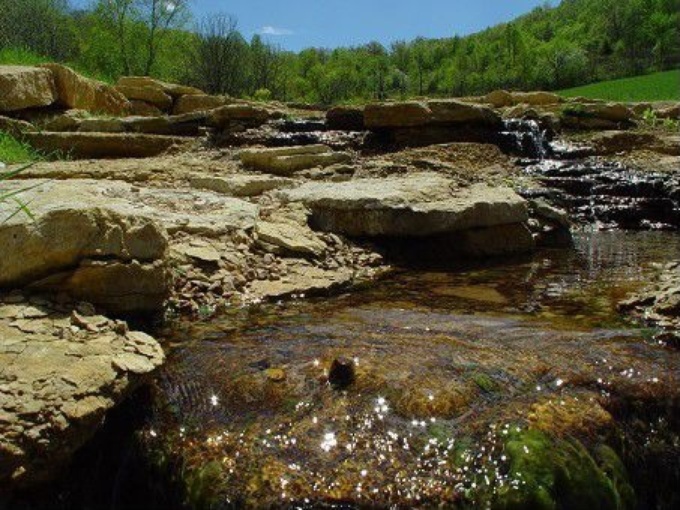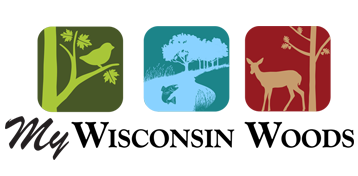
Meet the Winkleplecks: Comfort – Connection – Commitment
“Logan loves playing in the stream. It’s great. For hours he’ll capture tadpoles and other critters,” beams Chad, Logan’s Dad.
Chad Winklepleck is living proof that youthful outdoor experiences offer “comfort food” for a lifetime. “I needed stress relief from my Madison office life. I grew up around Portage, so owning a piece of land in Southern Wisconsin felt right,” says Chad. He and his wife Kristine purchased 80 acres in Richland County two years ago.
Ridge top to valley, the property has variety – fields, prairie, oak savanna, woods, and a stream. The Winkleplecks bought their retreat for beauty, privacy, wildlife habitat, and recreation. These comforts are largely enjoyed through the senses – the sound of the stream, a grouse on a nest, and earthy smells of the wetland, among others.
Their emotional needs satisfied, the next step for the Winkleplecks was to understand the land.
Connection
“I didn’t know one tree from the next, but wanted to,” recalls Chad. “To me they were all just the same: green.”
This prompted Chad to contact Erin Holmes, a Farm Bill Biologist. The two of them walked the property, read the land, shared ideas, and began to chart a course. Erin also brought other expertise to the table: a biologist from the U.S. Fish and Wildlife Service and a water technician from Richland County Land Conservation Department.
The team impressed Chad and Kristine, “They take your words, understand them, and help you make it happen,” Chad says. Overall, the Winkleplecks wanted to improve the land’s creature comforts – the “creatures” being wildlife and themselves.
For them, for example, prairie and savanna restoration was as much about wildlife habitat as the beauty visible from their cabin. People’s needs and the land’s needs have always been connected.
Commitment
Their diversity of land types across their property led likewise to a diversity of potential projects. A little planning made sense of it all.
“We were happy to just get advice, but then they offered to help fund the plan and projects,” Chad says. “So, why not?” Their goals as landowners along with professional perspective, priorities, and a timeline created a five-year plan.
So far, the Winkleplecks and “their team” have burned an oak woodland, planted a prairie, and restored the stream by removing box elder trees, sloping the banks, and creating riffles and pools. Chad has been tackling the invasive multiflora rose himself and his feelings are not a secret. “That stuff is so bad! I bleed every time!”
Ahead of them is timber stand improvement to benefit oak, hickory, and cherry by removing elm, ash, maple, ironwood, and autumn olive. Most importantly, the Winkleplecks praise “their team” for stressing patience when looking for outcomes – fish returning to the stream or prairie plants blooming – which, no doubt, provides a little of what started this all: comfort.
